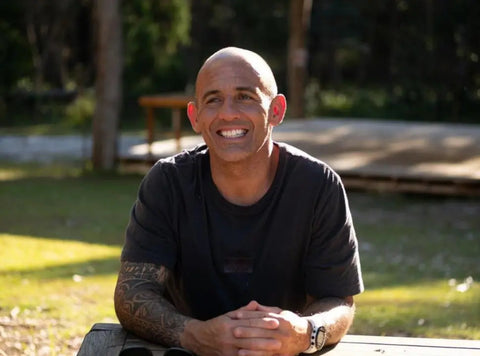In our previous blog, you learnt why you need to tweak your exercise and nutrition as you enter your 40s and 50s. But what exactly do you need to do, and how do you get the biggest bang for your buck? Do you need to become a gym junkie and spend all the little spare time you have pumping iron? Or, if you are a gym enthusiast, do you need to train less and quit your high-intensity sessions? Absolutely not! Based on the latest research on training for women over 40, the main things you need to do differently when it comes to EXERCISE and NUTRITION are:
1. Spend more time warming up and shorten your training sessions.
Long warm-up accelerates the Growth Hormone release. The latest research shows that a 10–15-minute warm-up incorporating mobility exercises followed by a 30-minute intense resistance session yields the highest Growth Hormone release in females. Besides other benefits such as building lean muscle and tissue regeneration, Growth Hormone is an essential regulator of fat metabolism at rest and a key factor in collagen synthesis. It declines with age, but it is possible to increase its levels with training. Resistance and high-intensity interval training seem to be the most effective methods. Females benefit from a shorter duration (30 min) and higher training intensity regarding Growth Hormone release. Exercising longer than 60 min causes Growth Hormone decline in females.
2. Do more mobility and flexibility training.
The physiological reasons for reduced flexibility and mobility include a loss of water and collagen in connective tissues such as ligaments, tendons, myofascia and spine, and a loss of elasticity throughout the muscle tendons and surrounding tissue leading to increased joint stiffness. Flexibility and mobility can be regained and maintained throughout life by adopting a healthy lifestyle and regular exercise. Collagen supplementation and adequate hydration will enhance the effects of your mobility and flexibility training.
3. Cover all your bases by doing HIIT, heavy weights and cardio.
Some exercise is better than none, but if you want to be the next Jane Fonda, you must cover all your bases-strength, endurance, cardiovascular fitness and flexibility. If all you do is run, your muscle strength and mass will decline eventually, and your bone health might deteriorate, and if all you do is lift weights, your cardiovascular fitness will suffer.
Interesting facts:
- In healthy mature adults, progressive resistance training can increase muscle mass by 16-23% in four months.
- HIIT has been proven to prevent chronic disease, increase Growth Hormone release, reduce abdominal fat while preserving lean muscle mass, improve V02 max (cardiovascular fitness), reduce blood pressure, improve cardiac function insulin sensitivity, and manage cholesterol/lipids even in the elderly population. A study published in the European Heart Journal also concluded that this type of training could keep our cells younger for longer by increasing the telomere length. Another study indicated significant improvements in sleep quality and energy levels after 12 weeks of regular participation.
- Running training increases the healthspan by lengthening telomeres. Telomeres protect our DNA. Once they become too short, they cannot protect our cells, and we start to age. An Australian study from 2013 compared 62 ultramarathon runners with 57 healthy but sedentary subjects. The runners were found to have telomeres 11% longer than the non-runners. These runners also had a biological age of 16.2 years younger than their chronological age.
4. Ensure longer and better recovery.
It is not during exercise that most age-related differences are evident, but rather during post-exercise recovery. We recover slower as we age due to various physiological factors, including lower muscle protein synthesis rate (slower muscle repair), lower oxygen supply to the muscles, lower ability to fight free radicals, and hormonal changes. My best tips include doing sauna after strength training, ice bath after endurance training, regular foam rolling and massages, daily mobility work, and stretching, even if it's just 10 min a day.
If you are doing ice baths to recover from endurance exercise, you get the best results at 10 min immersion and 10 degrees Celsius.
5. Tweak your nutrition.
Your body becomes less efficient as you age. You cannot detox as quickly as in your 20s, and lower estrogen levels leave you more sensitive to carbohydrates. The best diet to adopt as you age is lower in calories and carbohydrates and high in protein, micronutrients, and fibre.
Don’t freak out. There’s no need to count calories and analyse how much micronutrients are in each meal. You will hit your targets if you adopt a few simple strategies:
- Consume roughly 600g of non-starchy vegetables daily. Variety is the key! Eat the rainbow.
- Incorporate fermented foods (sauerkraut, kefir, kimchi, kombucha).
- Make sure you have at least 1g of protein per kilogram of body weight daily. For example, if you weigh 50 kg, you need at least 50g of protein (a small steak has around 30g of protein).
- Eat good fats. At least 0.8g per kilogram of body weight.
- Replenish your collagen by supplementing 5-10g of collagen 30-60min before each training session or physical activity. Have your collagen in the evening on days off training.
- Avoid ultra-processed foods and hydrogenated vegetable oils, and don’t use vegetable and seed oils for cooking.
- Reduce or ditch sugar and alcohol.
- Drink 3 litres of filtered water.
- Reduce chemical exposure (skincare, cleaning products, unnecessary medication).
My last and best tip is to think of exercise as brushing your teeth. It needs to be done to keep your teeth healthy, whether you like it or not. It's just something you do every day.
Literature:
Differential effects of endurance, interval, and resistance training on telomerase activity and telomere length in a randomised, controlled study. https://pubmed.ncbi.nlm.nih.gov/30496493/
Longer Leukocyte Telomeres Are Associated with Ultra-Endurance Exercise Independent of Cardiovascular Risk Factors.
https://www.ncbi.nlm.nih.gov/pmc/articles/PMC3729964/
All references from the previous blog.





Comments (0)
There are no comments for this article. Be the first one to leave a message!